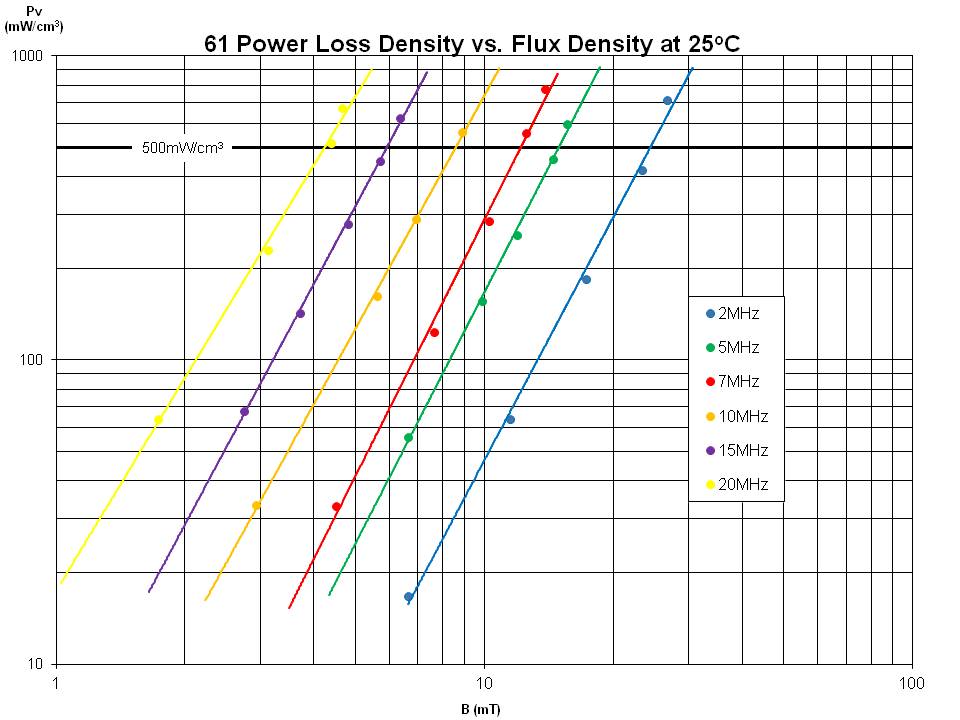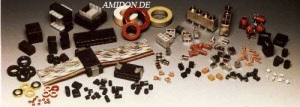Q-Kurven Material 61
Q-Kurven Material 61
MATERIAL 61 (Permeabilität 125)
Eine Ringkonfiguration bietet die ultimative Nutzung der Eigenschaften des intrinsischen Ferritmaterials. Ringkerne werden in einer Vielzahl von Anwendungen eingesetzt, z. B. als Eingangsfilter, Fehlerstromschutzschalter, Gleichtaktfilter und in Impuls- und Breitbandtransformatoren.
Ein Nickel-Zink-Material, das mittlere Temperaturstabilität, aber eine hohe Güte bietet (0,2 bis 15 MHz). In erster Linie Ersatz als Ringkern in Spulen hoher Güte. Auch lieferbar in Stabform oder als Breitband-Balunkern.
Ferrit-Ring für Breitbandtransformatoren
Frequenz hohe Güte bis 200 MHz
Features
NiZn ferrite material with a range for inductive applications up to 25 MHz, that can be used for EMI applications to suppress noise frequencies above 200 MHz.
Burnished to break sharp edges, can contain Parylene C coat at smaller
diameters from the length of 9.5mm (0.375") or a uniform coating of thermo-set
plastic at larger dimensions (if part numbers ends with a C).
Toroide werden auf AL-Werte bei 10 kHz getestet.
Σl/A : Core Constant, le : Effective Path Length, Ae : Effective Cross-Sectional Area, Ve : Effective Core Volume
AL : Inductance Factor 
|
Material 61 | ||
|
μi (reference) |
125 |
|
|
Anfangs-Permeablität |
125 | |
|
Max. Permeablität |
430 | |
|
Frequenz Resonanz |
0.2-10 MHz | |
|
Frequenz Breitband |
10-200 MHz | |
|
Frequenz Drossel |
200-1000 MHz | |
|
Kernmaterial |
Ni/Zn | |
|
Ferrite Material Constants |
| |
|
Specific Heat |
0.25 cal/g/°C |
|
|
Thermal Conductivity |
3.5 - 4.5 mW/cm-°C |
|
|
Coefficient of Linear Expansion |
8 - 10x10-6/°C |
|
|
Tensile Strength |
4.9 kgf/mm2 |
|
|
Compressive Strength |
42 kgf/mm2 |
|
|
Young's Modulus |
15x103 kgf/mm2 |
|
|
Hardness (Knoop) |
650 |
|
|
Specific Gravity |
≈4.7 g/cm3 |
|
|
Die oben genannten Eigenschaften sind typisch für Amidon MnZn- und NiZn-Ferrite. The above quoted properties are typical for Amidon MnZn and NiZn ferrites. |
| |







